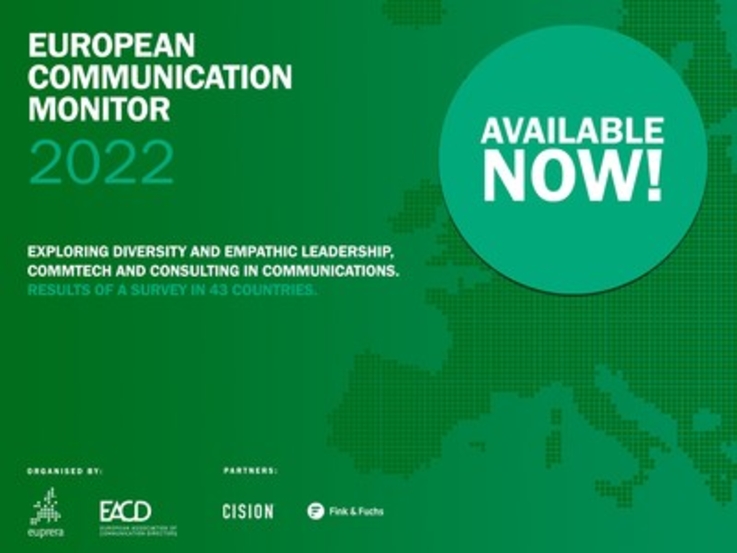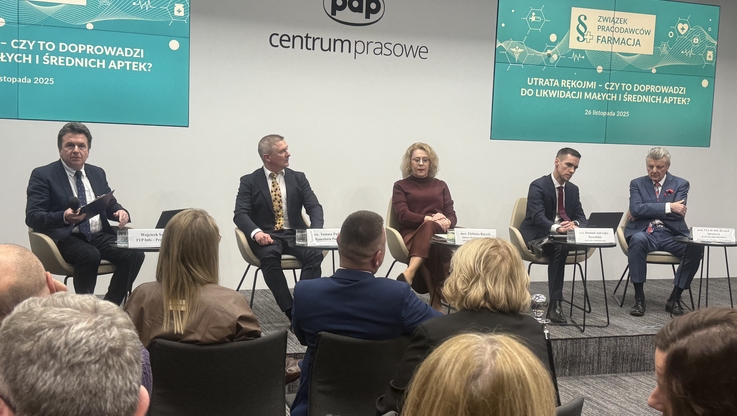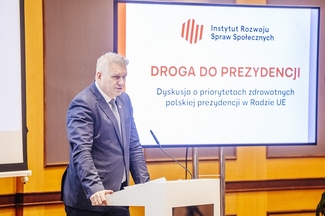Pobierz materiał i Publikuj za darmo

The 2022 edition of the world's longest running empirical study on current and future developments in strategic communication and public relations has been published today. The European Communication Monitor surveyed communication professionals in 43 countries, producing the following highlights:
• Diversity, equality and inclusion are influencing organisational policies and communications worldwide - but only every second communicator in Europe has closely followed global trends and discussions in this area
• Most practitioners have experienced empathic traits from communication leaders; this has a significant positive impact on commitment, engagement and mental health
• To date, very few communication departments have established an advanced use of CommTech to digitalise internal workflows and communication activities - organisational structures are identified as the main obstacle to rapid transformation
• Quality of consulting in communications is difficult to achieve; three out of four respondents would like to see appropriate standards that cover either consultants, clients themselves or both groups.
• The study reveals significant differences between countries as well as between companies and non-profits across Europe
The full report is available for free at www.communicationmonitor.eu.
BRUSSELS, July 7, 2022 /PRNewswire/ -- The results of the European Communication Monitor 2022 have been published today. This year's edition of the world's longest-running survey of the communications profession is based on interviewing 1,672 communication professionals from 43 European countries, providing valuable insights for public relations, corporate communications and public affairs. The study examines whether and how much-discussed developments in societies and organisations resonate in today's communication profession: these include ambitions to recognise diversity, equality and inclusion, and the trend towards a more empathic leadership style. Moreover, the digitalisation of communication departments and agencies and the dynamics of consulting in communications are explored. Salaries, key strategic issues as well as the characteristics of excellent communication departments have all been researched with more detailed analysis for 22 countries. A strict selection of participants, a unique research framework based on established theories and statistical analyses fulfilling academic standards are key features of the study which has once again been conducted and supported by a team of renowned communication professors from universities across Europe.
Professor Ansgar Zerfass, lead researcher of the study and Chair Professor at Leipzig University, explained: "We are currently experiencing a turning point in Europe. Many concepts that were considered a given yesterday are now radically questioned: The peaceful coexistence of nations and people in our region, the role of politics and media as integrative forces in society, and the ability of economies to drive innovation and sustainable development. This impacts our field – managing and executing professional communication for organisations – fundamentally. Some trends are quite specific, but others can be observed across Europe, as explored in this edition of the European Communication Monitor."
Kim Larsen, Global Head of Communication and Brand Experience at global bank ING and President of the European Association of Communication Directors, added: "In times of crisis, disruption and distrust, strategic communication is key to uncover the truth, create common ground and a shared understanding where at all possible. And as distrust is growing in society, facts and institutions are being challenged, therefore communicators have an important role to play to keep the truth up front and centre. This year's European Communications Monitor has investigated topics that impact the future success of our profession."
Diversity, equality and inclusion as a challenge for the profession
The 16th edition of the European Communication Monitor explores whether and how the debate on diversity, equality and inclusion resonates in the daily practice of communication management in Europe. Results show that only every second practitioner has followed the global trends and discussions (50.7%). About the same number of respondents confirms that the topic is heavily discussed in their country (49.5%).
Every second organisation considers age, ethnicity, and gender when planning and executing communication initiatives. Sociocultural status, disabilities, worldviews and political opinions or spiritual beliefs are taken into account less often. Most practitioners acknowledge that diversity can impact trust with external and internal stakeholders, and they carefully consider diversity factors when producing content. But only one third believes in an actual change in the communication workforce in the near future.
Empathic leadership in communication teams
During times of crisis, such as the COVID-19 pandemic, there have been arguments that leaders of organisations communicate with greater empathy. The survey explores this phenomenon alongside the effect empathic leadership has on mental health, commitment and wellbeing.
Results show that three out of four communication practitioners (73.3%) report empathic traits from communication leaders with the majority of practitioners (56.7%) stating this has increased in the last year during the pandemic. The findings also show that communicators overall are committed to their organisations. Similarly, the respondents are generally highly engaged by their work. An encouraging figure is that only 1% are at risk of burnout.
The most important takeaway is that practitioners working for an empathic leader in a communication department or agency are significantly more committed and engaged and display better mental health levels. This is a strong argument for developing leadership competencies and team culture in this direction.
External consulting in communications: Complexity, quality and trends
The majority of communication professionals in Europe believe that the need for external consulting on stakeholder communications and on structure and processes for communications in organisations are increasing. Yet, at the same time, 63.9% of the respondents perceive the consulting industry becoming increasingly diversified and complex, and 60.1% state that securing the quality of external consulting is getting more and more difficult.
When asked about what is the most important dimension to secure the quality of consulting processes, respondents put people and know-how of clients and consultants at the top spot (89.9% mentioning this as important or very important), followed by project coordination between both sides in second position (87.7%).
A strong majority of communication professionals in Europe support the idea of quality standards for communication consulting: 67.8% agree with the statement that the profession needs overarching standards for consultants to assess and secure the quality of consulting in communications, and 60.7% believe that the profession needs also standards for clients.
CommTech and the digital transformation of communications
A rather surprising finding of this study is that only one third (35.5%) of communication professionals across Europe have followed the debate on using software and services to digitalise their function (CommTech) closely. Only a small majority (up to 55.2%) believe that these technologies will change the communication profession, the communication departments or agencies they work for and the way they personally work. But there are huge differences between countries, with no clear regional tendency. When it comes to assessing the risks, one third of all respondents think that CommTech has disadvantages for stakeholder communication, internal consultation or workflows. The reluctance at the individual level of communicators corresponds with a moderate level of digitalisation at the meso level of communication departments and agencies. Only very few (6.2%) of these units have digitalised all their core activities and established a very advanced use of CommTech. Apart from these innovators, many lag behind in practice and are classified as outsiders, latecomers or a late majority by those working there. The biggest challenges in adopting CommTech are not technological issues (e.g., software performance) or human factors (e.g., lack of digital competencies among communicators), but factors that point to deficits within the respective organisations. Frequently, communication tasks and processes are not prepared for digitalisation (38.5%). The most common obstacles mentioned are inflexible structures and cultures, lack of support from IT departments and similar structural barriers (44.7%).
Editor's notes
About the European Communication Monitor 2022
The European Communication Monitor is annually organised by the European Public Relations Education and Research Association (EUPRERA) and the European Association of Communication Directors (EACD), supported by premium partner Cision, digital communications partner Fink & Fuchs, and regional partners #NORA in the Nordic countries and CECOMS in Italy. The Global Communication Monitor series is known as the most comprehensive research in the field worldwide covering more than 80 countries – the European survey is complemented by bi-annual surveys in other regions like Asia-Pacific, Latin and North America.
About the survey organisers
European Public Relations Education and Research Association (EUPRERA)
The mission of EUPRERA is to enhance and promote innovation in the knowledge, research, education and practice of strategic communication. Through its membership of universities and other research associations and bodies, EUPRERA is a global leader on high profile transnational research projects and networks. More than 200,000 scholars and practitioners can potentially be reached through its extended communication channels and partnership arrangements.
European Association of Communication Directors (EACD)
The EACD aims to attract, inspire and engage current and future communication leaders to drive excellence in the profession. It offers communication professionals a platform to connect, deepen their expertise, share best practice, establish and promote relevant standards. The EACD is a vibrant community with regional debates and working groups across Europe.
Photo - https://mma.prnewswire.com/media/1854492/SocialMediaBanner.jpg
Photo - https://mma.prnewswire.com/media/1854493/Graphic_1.jpg
Photo - https://mma.prnewswire.com/media/1854494/Graphic_2.jpg
Photo - https://mma.prnewswire.com/media/1854495/Graphic_3.jpg
Photo - https://mma.prnewswire.com/media/1854496/Graphic_4.jpg
Photo - https://mma.prnewswire.com/media/1854497/Graphic_5.jpg
Photo - https://mma.prnewswire.com/media/1854498/Graphic_6.jpg
Logo - https://mma.prnewswire.com/media/1854499/EACD_Logo.jpg
Logo - https://mma.prnewswire.com/media/1854500/EUPRERA_Logo.jpg
CONTACT:
Professor dr. Ansgar Zerfass
Leipzig University, Germany
Lead Researcher
e-mail: zerfass@uni-leipzig.de
phone +49 178 413 911 2
-
Angela Howarth
Board Member, EACD, London, UK
e-mail: angela@angelahowarth.com
phone +44 797 631 206 0
Źródło informacji: PR Newswire
Pobierz materiał i Publikuj za darmo
bezpośredni link do materiału
| Data publikacji | 07.07.2022, 10:13 |
| Źródło informacji | PR Newswire |
| Zastrzeżenie | Za materiał opublikowany w serwisie PAP MediaRoom odpowiedzialność ponosi – z zastrzeżeniem postanowień art. 42 ust. 2 ustawy prawo prasowe – jego nadawca, wskazany każdorazowo jako „źródło informacji”. Informacje podpisane źródłem „PAP MediaRoom” są opracowywane przez dziennikarzy PAP we współpracy z firmami lub instytucjami – w ramach umów na obsługę medialną. Wszystkie materiały opublikowane w serwisie PAP MediaRoom mogą być bezpłatnie wykorzystywane przez media. |






